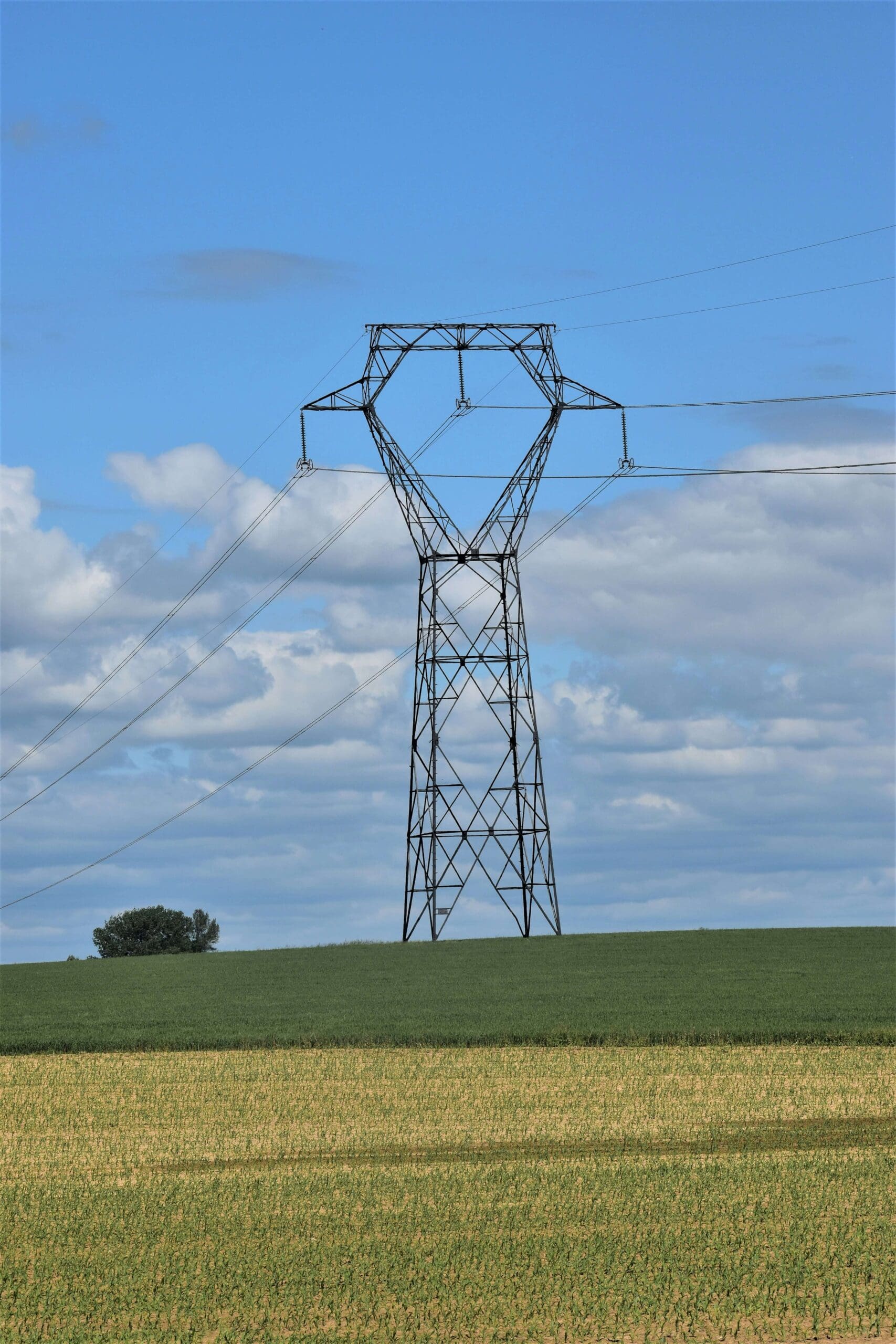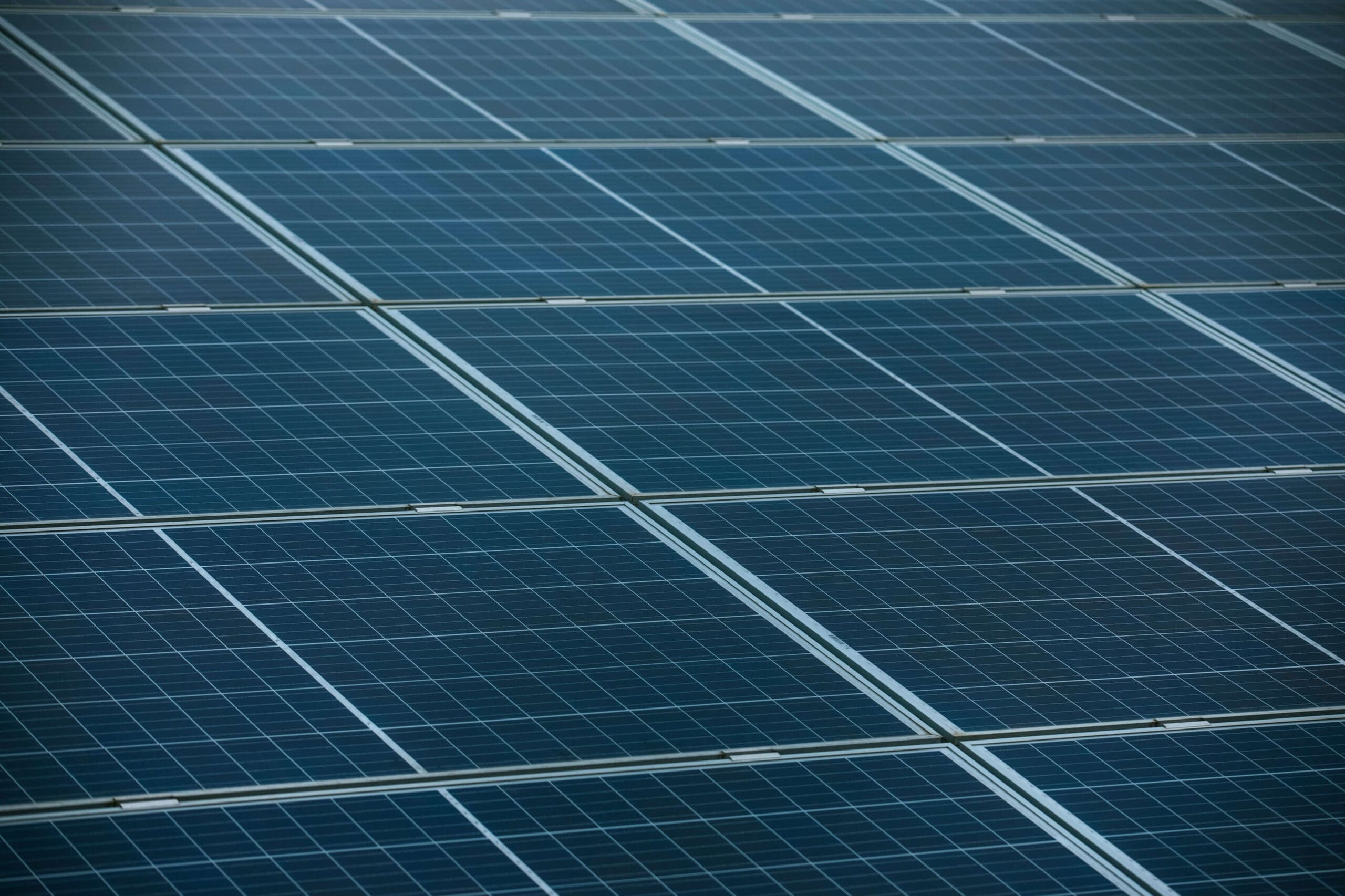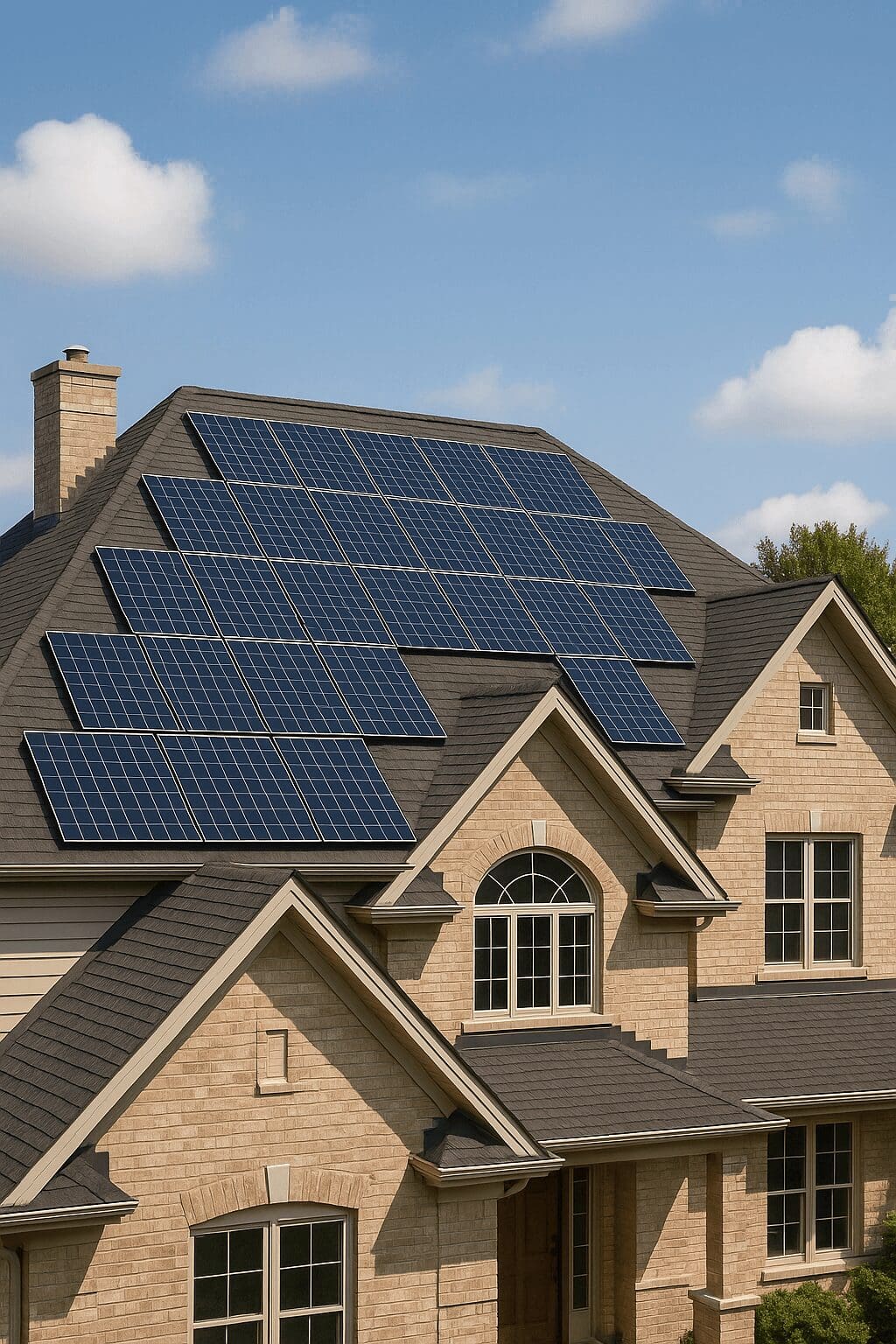Electricity rates are unpredictable. One year, you’re paying a steady bill, and the next, prices spike due to shifting energy markets, rising infrastructure costs, or new policy changes. Across Canada, homeowners are seeing their energy expenses fluctuate, often skyrocketing when they least expect it. Solar power presents a compelling solution to this instability. With the right setup, families can generate their own electricity, reduce dependence on utility companies, and stabilize long-term energy costs. And thanks to advancements in solar technology, making the shift to self-generated power is more accessible and reliable than ever before.
Why Energy Dependence is a Growing Concern
It’s easy to overlook how dependent we are on the power grid, until an outage strikes, rates surge, or unexpected energy restrictions disrupt daily life. Most households rely on centralized utility systems, where electricity is generated from sources like natural gas, hydro, or coal before being transmitted to homes across the province.
While these systems have powered homes for decades, they come with two major drawbacks:
- Cost Instability – Utility companies adjust rates based on energy demand, supply chain changes, and policy shifts, making it difficult for homeowners to predict long-term expenses.
- Grid Vulnerability – Power outages can happen at any time—due to severe weather, equipment failures, or demand surges. Homes relying entirely on the grid are left without backup power.
This is where solar technology steps in. It’s not just about saving money—it’s about taking control over how you power your home.
How Solar Panels Work
At their core, solar panels capture sunlight and convert it into usable electricity through photovoltaic (PV) cells. These tiny energy-catching units transform sunlight into an electric current, which is then converted into power for your home.
Once installed, solar panels allow homeowners to:
- Generate electricity directly from sunlight
- Reduce reliance on the power grid
- Lower monthly utility bills
Let’s explore how new innovations in solar technology are putting control back in the hands of homeowners and making grid dependence a thing of the past.
Solar Technology Advancements
Solar technology is evolving faster than ever, and homeowners are reaping the benefits. Just a decade ago, solar panels were bulky, costly, and only accessible to a select few. Today, streamlined designs and improved manufacturing processes have made solar more affordable and efficient, transforming it from a niche option to a mainstream energy solution.
From cutting-edge solar panel efficiency to smart energy management, homeowners now have more control over how they produce and use electricity. At the same time, utilities are upgrading infrastructure to better integrate residential solar systems into the grid. The result? A more flexible, resilient energy future.
One of the most exciting changes is the shift toward smarter energy management. Solar power is no longer just about generating electricity, it’s about optimizing how and when homeowners use it. Innovations in monitoring technology allow homeowners to track their energy production and consumption in real time, making adjustments to maximize savings. Pair this with automated systems that intelligently distribute power, and solar becomes more than a source of energy; it becomes a dynamic tool for managing home electricity use.
The relationship between solar and the utility grid is evolving, too. Historically, homeowners with solar panels would rely on the grid for backup when the sun wasn’t shining. But today, more solar-powered homes are equipped with advanced storage solutions, allowing them to store excess power in a battery bank and use it later instead of drawing from the grid. Some homeowners are even selling surplus energy back to utilities, contributing to the grid’s overall stability while benefiting families financially.What’s clear is that solar is no longer just about supplementing traditional electricity, it’s about reshaping how homeowners interact with energy. As these innovations continue, solar power is evolving from an alternative energy source to a fundamental pillar of home energy independence.
Innovations That Are Changing the Game
Technology never stops evolving, and the latest innovations in solar energy are making it even easier for homeowners to reduce grid dependence. Here are some of the biggest breakthroughs reshaping the industry:
1. Higher-Efficiency Solar Panels
Efficiency is the name of the game. Not long ago, solar panels hovered around 15–18% efficiency. Now, thanks to breakthroughs in materials and engineering, high-performance panels reach 22–24% efficiency, or more.
This increase in efficiency means that modern solar panels can generate more electricity using the same roof space, making solar power more accessible and cost-effective for homeowners.
Advancements in photovoltaic technology, including improved materials and better manufacturing processes, are pushing efficiency even further, paving the way for an era where solar energy plays a dominant role in sustainable power generation.
- Bifacial Panels: These panels generate power from both sides, capturing reflected sunlight from rooftops or the ground below. Homeowners can squeeze more energy from the same rooftop space.
- Perovskite Solar Cells: A promising new material, perovskite cells could push efficiency even higher while lowering production costs.
- Building-Integrated Solar: Traditional solar panels aren’t the only option anymore. Solar shingles and windows allow homeowners to generate power without altering their home’s aesthetic.
Solar technology is not only advancing, it’s revolutionizing the way we harness and utilize energy. With efficiency breakthroughs, innovative materials, and smarter integration methods, the future of solar isn’t just promising; it’s inevitable.
2. Advanced Battery Storage Solutions
One of the biggest advancements in solar technology is the rise of battery storage systems. With a solar battery, homeowners can store excess energy produced during the day and use it when they need it most—at night, during cloudy weather, or even during power outages. This means your household can function independently, without worrying about rising electricity rates or unexpected outages.
When paired with solar panels, battery storage systems allow homeowners to:
- Store extra solar energy instead of sending it back to the grid
- Power their homes at night, reducing reliance on utility companies
- Maintain electricity during blackouts or grid failures.
New battery models, like the Tesla Powerwall and LG Chem RESU, offer longer-lasting energy storage, helping homeowners maintain power without relying on the grid. These advanced storage solutions not only improve energy reliability but also enable homeowners to optimize usage by storing excess solar power generated during peak hours.
As battery technology continues to evolve, the shift toward self-sustaining home energy systems becomes more accessible and cost-effective.
3. Smart Solar Monitoring Systems
Homeowners can now track solar production, storage, and usage through real-time monitoring platforms. These platforms provide detailed insights into energy patterns, allowing homeowners to make informed decisions about consumption and battery storage. This helps maximize energy savings and ensures solar panels are performing at their best.
By identifying peak production times and optimizing energy use accordingly, users can further reduce reliance on the grid and enhance overall system efficiency. As solar technology advances, real-time monitoring will play an increasingly vital role in empowering homeowners with greater energy independence and sustainability.
4. AI-Powered Energy Management
AI-driven platforms analyze real-time energy data and optimize power usage based on consumption patterns, weather conditions, and electricity rates. By automatically adjusting energy flow, homeowners can reduce utility costs, minimize grid reliance, and maximize overall energy efficiency without manual intervention.
Beyond individual homes, AI-powered energy management is shaping the future of smart grids and decentralized energy networks. These systems create a resilient, self-sustaining energy infrastructure by connecting distributed renewable energy resources, such as solar panels, batteries, and EVs, into a synchronized ecosystem. This innovation not only lowers electricity bills but also strengthens the grid, balancing power supply and demand with unmatched precision.
5. Smarter Inverters
Solar inverters do more than just convert solar power into usable electricity, they now optimize energy flow to ensure homeowners use as much solar energy as possible before relying on the grid. The latest smart inverter models feature intelligent energy management, adjusting voltage and frequency in real time to stabilize grid operations and maximize solar usage.
Beyond efficiency improvements, advanced solar inverters enable seamless grid communication, enhancing system reliability and performance. With AI-driven diagnostics and real-time monitoring, they detect potential issues before power production is affected, reducing maintenance costs and extending system lifespan. As solar technology evolves, smarter inverters play a critical role in optimizing home solar systems, improving energy independence and supporting a more resilient power grid.
6. Grid-Interactive Solar Systems
Some solar setups allow homeowners to automatically switch between solar, battery, and grid power, ensuring they use the most cost-effective source at any given time.
During peak electricity demand or outages, the setup prioritizes stored battery energy, while excess solar production can be directed to the grid for potential credits. This dynamic approach ensures homeowners maximize efficiency, reduce dependence on traditional utilities, and embrace a more sustainable and self-sufficient energy lifestyle.
7. Grid Infrastructure Modernization
For years, utility grids were designed for one-way electricity flow from power plants to homes. Now, with millions of homeowners generating their own power, grids must adapt to bidirectional energy flow.
Grid modernization includes:
- Advanced Metering: Smart meters allow for real-time monitoring of electricity consumption, making it easier to balance solar power with grid demand.
- Virtual Power Plants: Home solar systems can be linked together to provide grid support, supplying power when demand is high.
- Microgrids: Small-scale grids allow communities or individual homes to function independently during outages or high-demand periods.
This transformation marks a pivotal shift toward a more resilient, flexible, and sustainable energy future—one where homeowners play an active role in shaping the grid of tomorrow.
The Future of Solar for Homeowners
Solar power is becoming more accessible, efficient, and intelligent. With continued innovation, homeowners will have even more opportunities to take control of their energy use, saving money while reducing reliance on traditional utilities.
As these technologies continue to evolve, homeowners will have more control, greater savings, and a stronger stake in the push toward a world with abundant energy freedom. The era of truly optimized solar energy has arrived.
Why You Shouldn’t Wait to Go Solar
While waiting for future solar advancements might seem like a smart strategy, the truth is that today’s rooftop solar systems are already efficient enough to meet the total energy needs of the average family. Modern high-efficiency solar panels generate more than enough electricity, allowing homeowners to cut utility bills, reduce grid dependence, and even store excess power for backup energy.
Waiting for “the next big breakthrough” only delays your savings. While solar technology continues to evolve, the systems available right now are more than capable of powering homes efficiently. Even if new technology emerges in the coming years, existing systems will still generate all the energy a household needs, ensuring homeowners continue to benefit from energy independence and long-term cost savings.
Additionally, as electricity rates rise and solar incentives shift, postponing installation could mean missing out on rebates, tax credits, and peak financial benefits. The longer you wait, the more you spend on rising utility costs, while those who switch to solar now lock in stable, predictable energy expenses.
Solar is no longer a future investment; it’s a powerful solution for today. By installing a system, homeowners can take control of their energy costs, embrace sustainability, and secure decades of reliable power without worrying about what’s next in solar technology. The best time to invest in solar energy isn’t “someday”—it’s now.
Taking the Next Step Toward Energy Independence
Transitioning to solar power is one of the most impactful steps you can take toward reducing reliance on the grid, stabilizing energy costs, and gaining control over your electricity consumption. Whether you’re looking to cut utility bills, increase resilience against outages, or make a long-term investment in sustainability, it all starts with assessing your home’s solar potential.
Here’s what to consider before making the switch:
- Sunlight Exposure: Does your roof receive ample direct sunlight throughout the day, without obstruction from trees or nearby buildings?
- Roof Size & Space: Is your roof large enough to accommodate solar panels that meet your energy needs? The more surface area available, the greater your solar generation potential.
- Energy Consumption: Do you consume a significant amount of electricity, making solar a cost-effective investment for your household? Families with high energy usage often see the biggest savings from installing solar panels.
Why Now is the Best Time to Invest in Solar
There has never been a better time to take control of your energy costs. With rising utility rates and increasing volatility in the energy market, homeowners are turning to solar power as a long-term solution for stability, savings, and sustainability. Thanks to government incentives, net metering programs, and cutting-edge solar technology, investing in solar is more affordable and accessible than ever.
Financial Incentives That Make Solar Affordable
Governments offer rebates, tax credits, and financing programs to help offset the upfront cost of solar panel installations. Many provinces also support net metering, allowing homeowners to sell excess solar energy back to the grid, reducing monthly utility bills and creating an additional stream of savings. These incentives make solar a high-return investment, locking in lower energy costs for years to come.
Solar Technology is More Powerful Than Ever
Breakthroughs in solar efficiency, battery storage, and smart energy management mean today’s solar systems generate more power, last longer, and maximize energy independence like never before. High-performance solar panels now reach up to 24% efficiency, enabling homeowners to produce more electricity with less roof space.
With solar battery storage solutions like the Tesla Powerwall and LG Chem RESU, homeowners can store excess energy for nighttime use and power outages, ensuring uninterrupted access to renewable energy while reducing reliance on the grid.
GreenKey Makes Solar Simple
GreenKey simplifies the process by gathering multiple solar quotes on behalf of homeowners, ensuring you get the best value and highest-quality installation from trusted professionals. Our transparent, unbiased, and hassle-free approach takes the guesswork out of choosing a system, empowering homeowners to make the best decision for their energy future.



